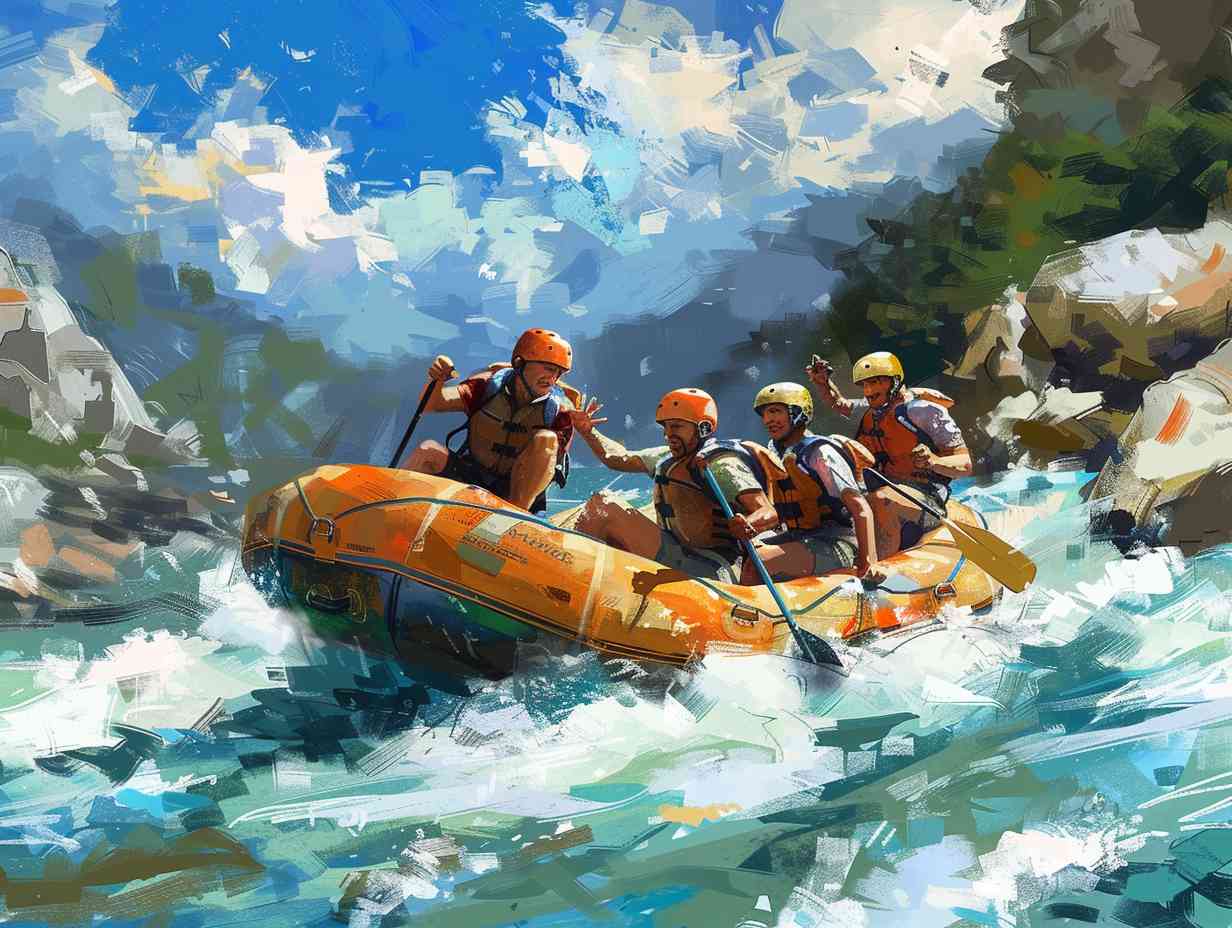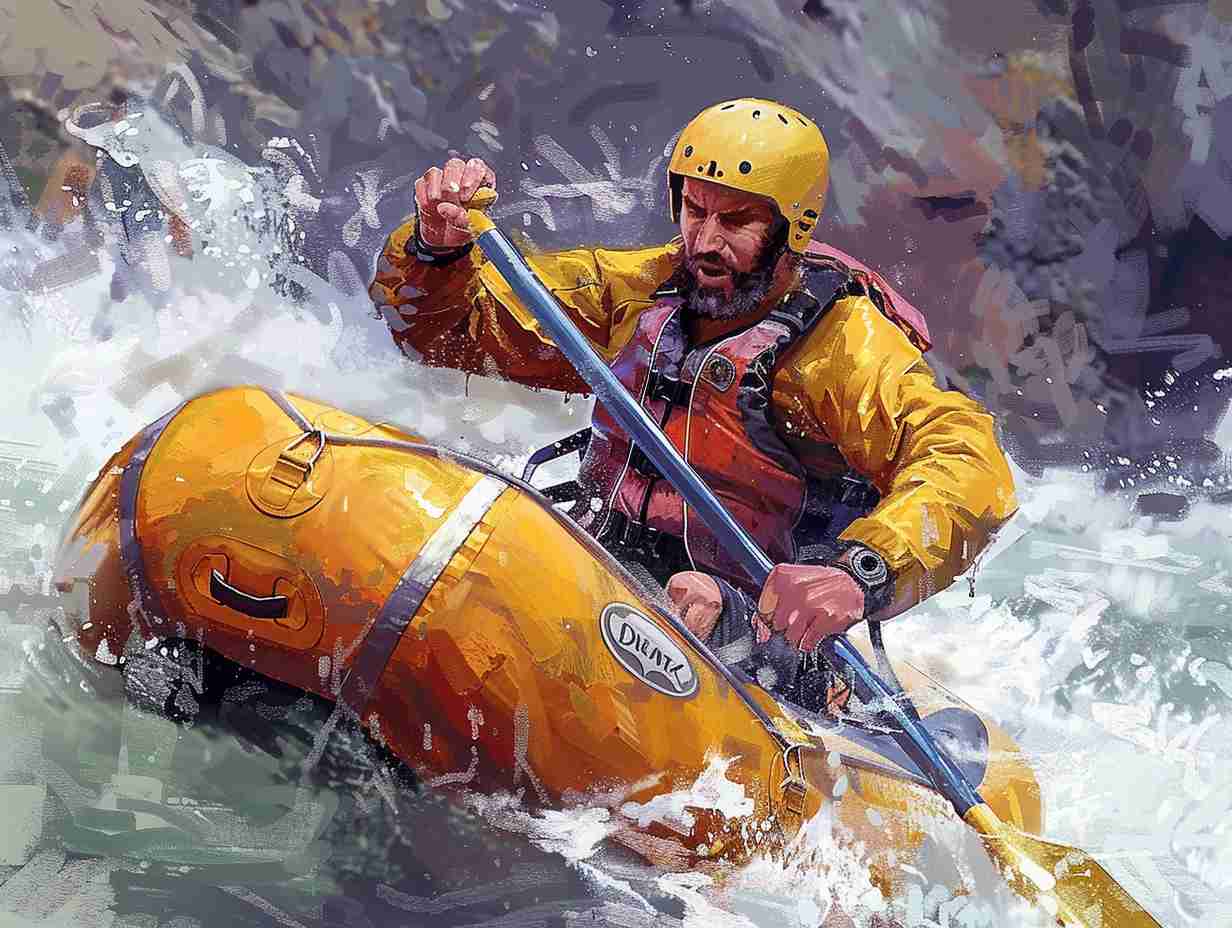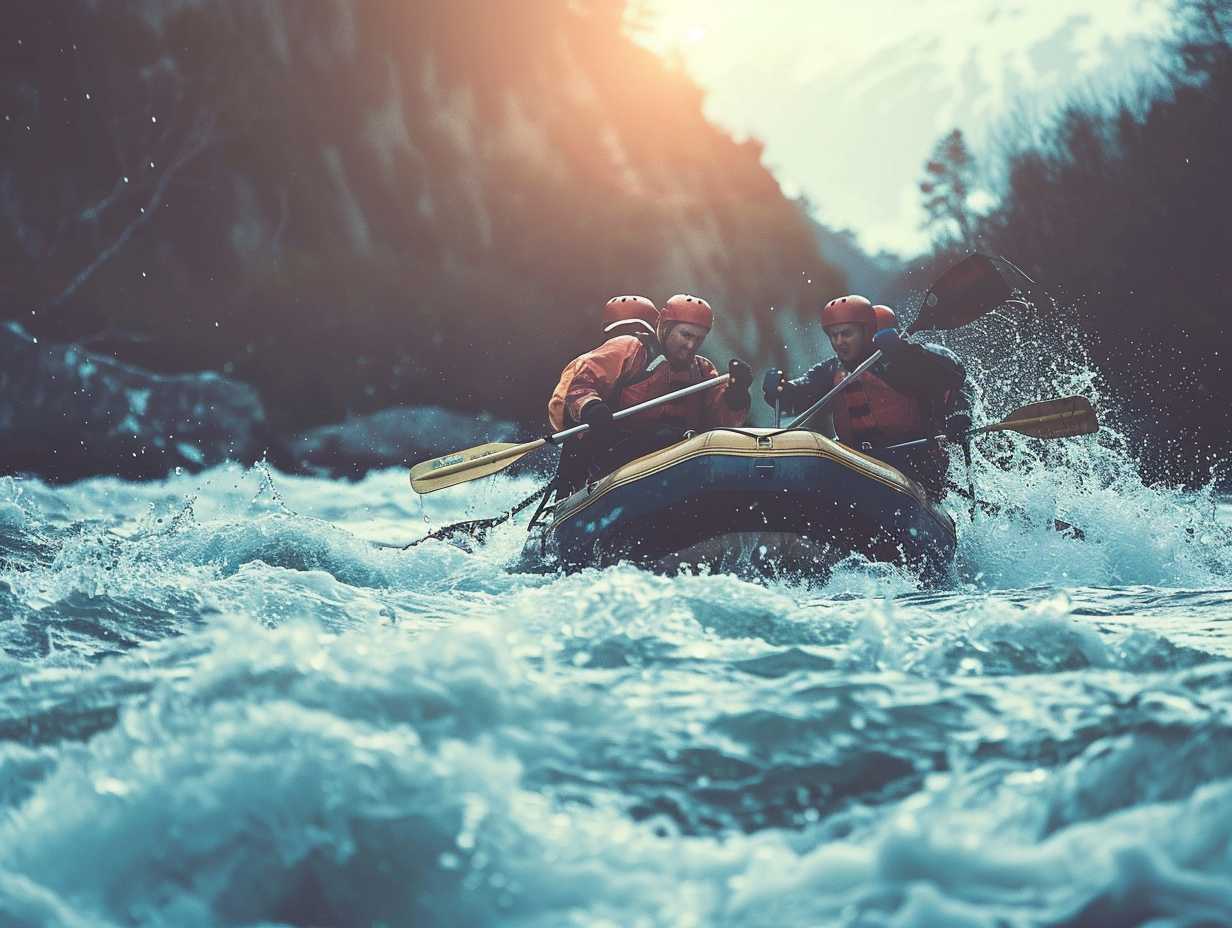
Whitewater Rafting Safety Guidelines

When guiding the unpredictable waters of whitewater rafting, think of safety guidelines as your trusty compass, safeguarding you through a turbulent journey.
But remember, even the most experienced explorers can find themselves in the midst of unexpected challenges.
So, how can you guarantee a smoother course and secure your crew’s well-being on this exhilarating adventure?
Key Takeaways
- Proper gear like PFDs and helmets is essential for safety.
- Understand river classifications to choose suitable routes.
- Master proper paddling techniques for effective navigation.
- Rely on professional guides for expertise and emergency response.
Rafting Gear Essentials
When preparing for a whitewater rafting adventure, ensuring you have the essential rafting gear is important for your safety and enjoyment.
The most important piece of equipment is a properly fitted personal flotation device (PFD) that should always be worn on the water.
A helmet is also a must to protect your head from potential impacts during the thrilling ride.
Additionally, sturdy water shoes or sandals with straps are essential to keep your feet protected and secure while steering the rapids.
Quick-drying clothing made of synthetic materials is recommended to help regulate your body temperature and keep you comfortable throughout the journey.
Understanding River Classifications
To navigate whitewater rafting safely, it’s essential to understand the different classifications of rivers based on their difficulty levels. When planning your adventure, consider the following river classifications:
- Class I: Easy - Fast-moving water with small waves and few obstacles, suitable for beginners.
- Class II: Novice - Straightforward rapids with clear passages, perfect for those with some rafting experience.
- Class III: Intermediate - Rapids that require precise maneuvering, offering a more challenging experience for seasoned paddlers.
Understanding these classifications will help you choose the appropriate river for your skill level, ensuring a safe and enjoyable whitewater rafting trip.
Proper Paddling Techniques

Mastering proper paddling techniques is essential for traversing whitewater rapids with skill and precision. When paddling through rapids, remember to keep a firm grip on the paddle and use it as an extension of your arm.
To steer the raft, paddle on the opposite side of where you want to go. This helps the raft turn in the desired direction. Additionally, maintaining a steady rhythm with your paddling partners is important for synchronization and efficient maneuvering.
Leaning into the paddle and using your upper body strength will also help propel the raft forward through turbulent waters. Practice these techniques beforehand to guarantee a safe and enjoyable whitewater rafting experience.
Emergency Preparedness Tips
Make sure you’re equipped with essential safety gear and knowledge to handle unexpected situations while whitewater rafting. In case of emergencies, follow these vital tips:
-
Stay Calm: Panicking can make situations worse. Keep a clear mind to assess and react effectively.
-
Communication is Key: Establish clear signals with your group to communicate effectively during emergencies.
-
Practice Self-Rescue Techniques: Learn how to help yourself and others in case someone falls out of the raft.
Importance of Professional Guides

As you navigate through challenging whitewater rapids, the presence of professional guides can greatly guarantee your safety and overall rafting experience. Professional guides are trained to read the river, navigate difficult sections, and respond quickly to any emergencies that may arise.
Their expertise not only secures a safer journey but also allows you to fully immerse yourself in the thrill of the experience without worrying about the technicalities. Professional guides can provide valuable instructions on paddling techniques, help you stay on course, and offer insights into the surrounding nature and wildlife.
Frequently Asked Questions
What Should I Do if I Fall Out of the Raft While Whitewater Rafting?
If you fall out of the raft while whitewater rafting, remain calm, float on your back with feet downstream, and signal for help. Do not stand up in fast-moving water. Follow safety instructions and wait for rescue.
Are There Any Age Restrictions for Whitewater Rafting?
When it comes to whitewater rafting, age restrictions vary. Different companies may have specific guidelines. Always check with the rafting outfit beforehand to make sure you meet age requirements and can enjoy the adventure safely.
Is It Safe to Bring My Own Gear for Whitewater Rafting?
Yes, it’s safe to bring your own gear for whitewater rafting. Make sure it meets safety standards and fits properly. Personal equipment familiarity can enhance your experience, but always follow guidelines for a safe adventure.
How Do I Know if I Am Physically Fit Enough for Whitewater Rafting?
Feeling unsure about your physical readiness for whitewater rafting? Listen to your body, start with light cardio and strength training. Consult your doctor if needed. Slowly build up your endurance before taking on the rapids.
Can I Raft Alone or Do I Need to Be Part of a Group?
You should never raft alone, it’s safer in a group. Rafting with others guarantees help is close by in case of emergencies. Plus, it’s more fun to share the adventure and experience the thrill together.
Conclusion
As you paddle down the rushing river, remember to keep your gear secure, follow proper techniques, and stay alert for any emergencies.
With the help of professional guides and your own preparedness, you can navigate the whitewater safely and enjoy the exhilarating experience.
So grab your paddle, feel the adrenaline rush, and let the adventure unfold as you conquer the whitewater rapids with confidence.
More information about
Affiliate information declaration: We may earn revenue from the products referred on this page and participate in affiliate programs.


